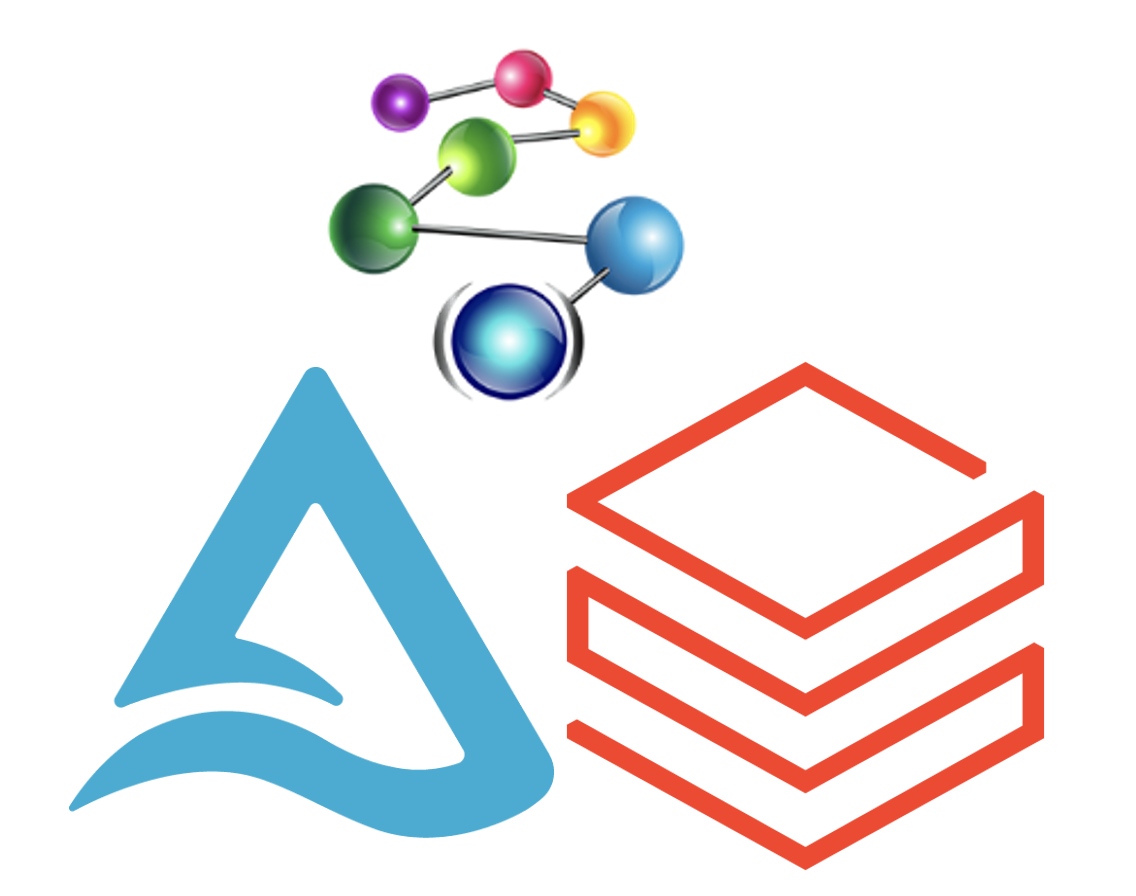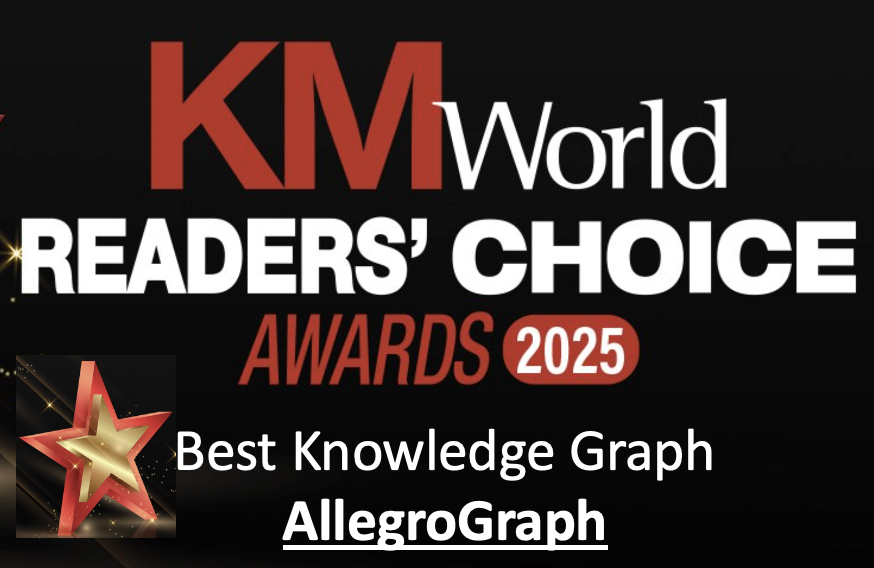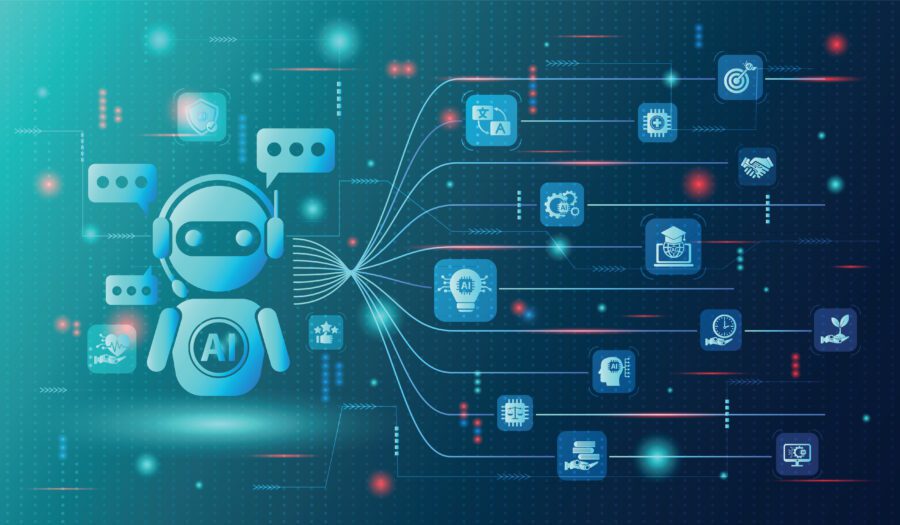
- 15 May, 2023
AllegroGraph Semantic Layer for Databricks (Delta Lake)
This AllegroGraph tutorial is available on our Github Examples page.
Databricks is a popular choice for hosting lakehouses – a new architecture that unifies data storage, analytics, and AI on one platform. On the other hand, as an enterprise knowledge graph platform, AllegroGraph provides quick semantic layer integration with Databricks transparently through our advanced VKG (virtual knowledge graph) interface.
In this tutorial, we will show you how to load RDF triples directly from your Delta Tables that are hosted in Databricks, and we assume the readers have prior experience with AllegroGraph and our agtool facility.
For users starting with the open-source Delta Lake but not hosted on Databricks, this tutorial may still apply, as long as your platform exposes a JDBC connection and enables SQL as (one of) its query interface.
Requirements
Obviously, you will need to have a running cluster or a SQL warehouse in your Databricks workspace as well as an AllegroGraph server. This tutorial uses a cluster to demonstrate.
Note that Databricks provides trial clusters and one can start from here. If all is successfully set up, the cluster’s dashboard should look similar to this:
Create a table and load a sample dataset
We use a sample dataset called people10m for this tutorial. As documented by Databricks, we can load it into a table by executing this SQL query:
CREATE TABLE default.people10m OPTIONS (PATH 'dbfs:/databricks-datasets/learning-spark-v2/people/people-10m.delta')After being successfully loaded, you can find the table in the Data Explorer:
as well as a few sample data rows:
Prepare Databricks JDBC Connection
Now we need to prepare the Databricks JDBC connection details. You may follow these steps to retrieve the JDBC URL, which may look similar to:
jdbc:databricks://dbc-0bf1f204-2226.cloud.databricks.com:443/default;transportMode=http;ssl=1;httpPath=sql/protocolv1/o/3267754737859861/0405-070225-tumf7a9c;AuthMech=3;UID=token;PWD=<personal-access-token>
A personal access token is needed, see here for how to generate one.
Last but not least, we will need to download the Databricks JDBC driver from here. This tutorial uses version 2.6.32. Both the URL and the driver are needed by AllegroGraph’s virtual knowledge graph interface, as we will see later.
vload – Load RDF triples from Databricks
The vload facility of agtool is able to load data from relational databases as RDF triples. For a tutorial for vload itself, please refer to this page.
To configure vload, we need 2 files:
demo.properties
This file contains information about the Databricks JDBC connection details as what we have shown in the previous section:
jdbc.url=<your-JDBC-url>
jdbc.driver=com.databricks.client.jdbc.Driver
Note that the downloaded Databricks JDBC driver also needs to be properly installed. See more details here.
demo.mapping.obda
This file defines the rules of how to map the columns from the people10m table between our expected RDF triples. As the target and source sections indicate, we will map id, firstName, lastName, gender, and salary into RDF triples by executing a SQL query.
[PrefixDeclaration]
: http://example.org/
rdf: http://www.w3.org/1999/02/22-rdf-syntax-ns#
rdfs: http://www.w3.org/2000/01/rdf-schema#
owl: http://www.w3.org/2002/07/owl#
xsd: http://www.w3.org/2001/XMLSchema#
obda: https://w3id.org/obda/vocabulary#
[MappingDeclaration] @collection [[
mappingId people10m
target :{id} a :Person ; rdfs:label "{firstName} {lastName}" ; :gender "{gender}"; :salary "{salary}"^^xsd:int .
source SELECT * FROM `hive_metastore`.`default`.`people10m` LIMIT 1000
]]
By using this mapping, a row of such data:
| id | firstName | middleName | lastName | gender | birthDate | ssn | salary |
|---|---|---|---|---|---|---|---|
| 3766824 | Hisako | Isabella | Malitrott | F | 1961-02-12T05:00:00.000+0000 | 938-80-1874 | 58863 |
will be mapped to these RDF triples (in Turtle syntax):
@prefix : <http://example.org/> .
@prefix rdf: <http://www.w3.org/1999/02/22-rdf-syntax-ns#> .
@prefix xsd: <http://www.w3.org/2001/XMLSchema#> .
@prefix rdfs: <http://www.w3.org/2000/01/rdf-schema#> .
:3766824 a :Person ;
rdfs:label "Hisako Malitrott" ;
:gender "F" ;
:salary "58863"^^xsd:int .For more details on creating mappings, please refer to this page.
Finally, we can start vloading by running this command:
agtool vload --ontop-home /path/to/ontop --properties /path/to/your/demo.properties --mapping /path/to/your/demo.mapping.obda people
2023-04-12T19:04:13| Creating a temporary workspace
2023-04-12T19:04:13| Temporary workspace successfully created: "/tmp/agtool-vload-1dfd731d-4862-e844-fde6-0242164d5260/"
2023-04-12T19:04:13| Mapping file is given, skip bootstrapping
2023-04-12T19:04:13| Starting materialization
2023-04-12T19:04:16| Materialization - OBTAINED FROM SPARK JDBC DRIVER: hive_metastore, default
2023-04-12T19:04:18| Materialization - 19:04:18.398 |-INFO in i.u.i.o.a.r.impl.QuestQueryProcessor - Ontop has completed the setup and it is ready for query answering!
2023-04-12T19:04:30| Materialization - WARNING: sun.reflect.Reflection.getCallerClass is not supported. This will impact performance.
2023-04-12T19:04:31| Materialization - NR of TRIPLES: 1000
2023-04-12T19:04:31| Materialization - Elapsed time to materialize: 13218 {ms}
2023-04-12T19:04:34| Materialization - NR of TRIPLES: 1000
2023-04-12T19:04:34| Materialization - Elapsed time to materialize: 2786 {ms}
2023-04-12T19:04:35| Materialization - NR of TRIPLES: 1000
2023-04-12T19:04:35| Materialization - Elapsed time to materialize: 1339 {ms}
2023-04-12T19:04:36| Materialization - NR of TRIPLES: 1000
2023-04-12T19:04:36| Materialization - Elapsed time to materialize: 1210 {ms}
2023-04-12T19:05:36| Materialization successfully exited
2023-04-12T19:05:36| Start loading triples
2023-04-12T19:05:37| Load finished 4 sources in 78ms (0.08 seconds). Triples added: 4,000, Average Rate: 51,282 tps.It will load the RDF triples into the people repository. You may display a few sample instances through Gruff:
Now let’s try to query all the information of 10 top-paid people:
agtool query --output-format table people - <<EOF
PREFIX : <http://example.org/>
SELECT ?person ?name ?gender ?salary {
?person a :Person ;
rdfs:label ?name ;
:gender ?gender ;
:salary ?salary .
}
ORDER BY DESC(?salary)
LIMIT 10
EOF
---------------------------------------------------
| person | name | gender | salary |
===================================================
| :3767538 | Shameka Mitcham | F | 135931 |
| :3767690 | Adelia Salters | F | 134145 |
| :3767101 | Eldora Welbeck | F | 134099 |
| :3767137 | Rosalie Challenger | F | 129091 |
| :3767409 | Hassie Sides | F | 127972 |
| :3767659 | Bridget Inwood | F | 126424 |
| :3767771 | Lovie Dorn | F | 124903 |
| :3767631 | Latoya Stogill | F | 120098 |
| :3766922 | Dot Murkus | F | 119509 |
| :3767736 | Ima Adnam | F | 119195 |
---------------------------------------------------
Query information:
time : output: 0.001829, overall: 0.045899, parse: 0.000000, plan: 0.020477, query: 0.005075, system: 0.000072, total: 0.027381, user: 0.042787
memory : consCells: 5829080, majorPageFaults: 0, maximumChunk: 5200000, maximumMap: 10131448, minorPageFaults: 2787
other : generation: 2, info: "bindings-set", rowCount: 10
Summary
This tutorial has shown AllegroGraph’s capability of creating a Semantic Layer for the Databricks lakehouse platform.
Adding a semantic layer, via AllegroGraph, ascribes business meaning to data so end users can better understand their data and associated metadata. A semantic layer provides a number of advantages in terms of Enterprise-wide data management. Users can define business concepts and connections which add meaning to their desired use-case. Some specific advantages of a semantic layer include: improved data integration, enhanced data accessibility, improved data governance, enhanced data quality, and enhanced data security.











